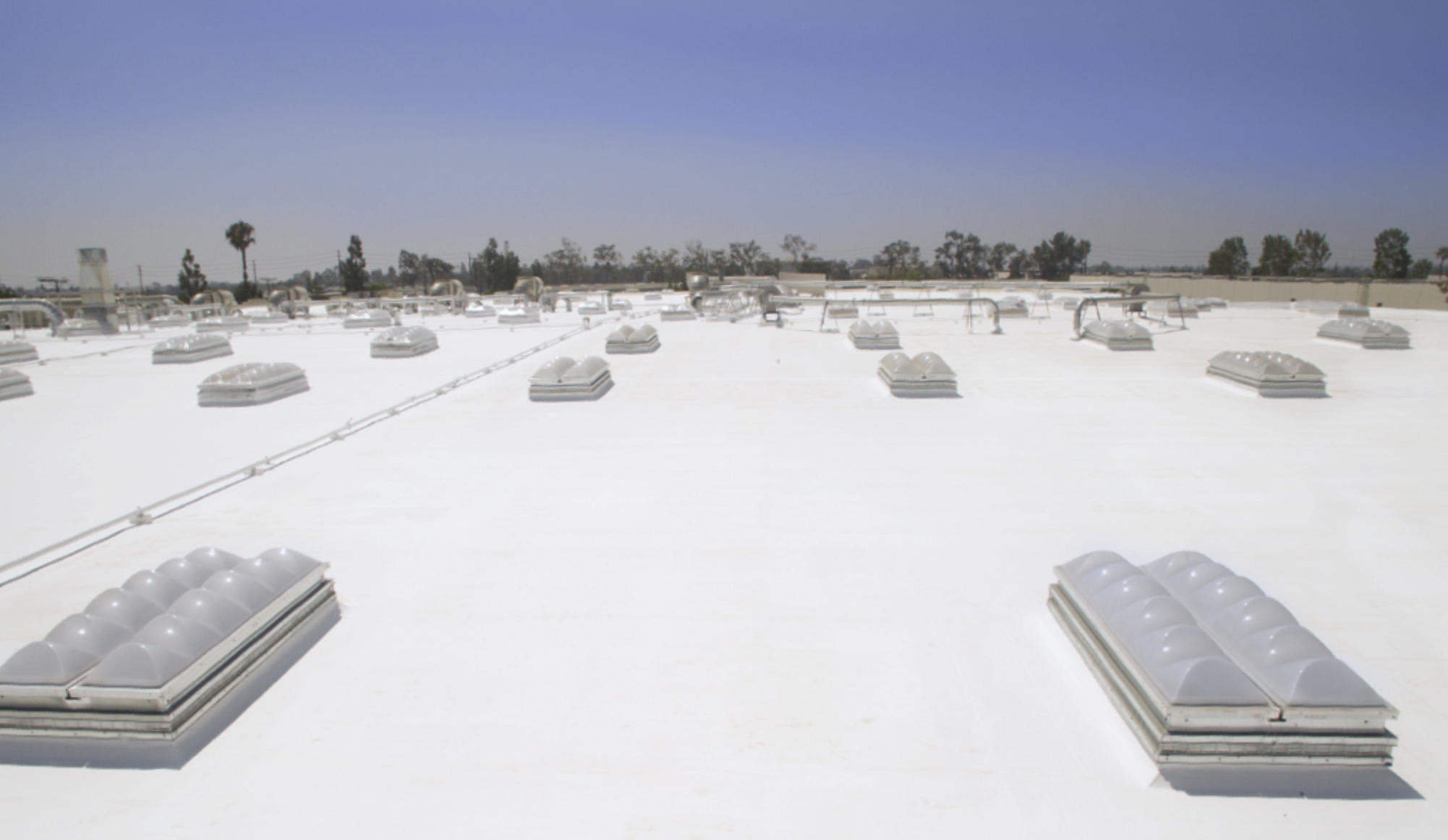The roofing industry is familiar with changes brought on decades ago by international treaties that limited and then banned the use of products containing substances with measurable ozone depletion potential (ODP) — a relative measure of a substance’s contribution to the degradation of the ozone layer. The global effort to reduce emissions of ODP substances required manufacturers in the United States and Canada to phase out the use of CFCs and HCFCs in various products (example: polyisocyanurate insulation) and replace them with non-ODP alternatives. In certain instances, ODP substances were replaced by alternatives that had measurably high contributions to global warming, measured as global warming potential (GWP).
Today, under renewed efforts to combat the climate change impacts associated with the manufacture and use of products from insulation to refrigeration, U.S. state governments as well as the Government of Canada have implemented restrictions on the use of products containing certain high-GWP substances. For the roofing industry, familiar products that can contain high-GWP substances include foam adhesives, spray polyurethane foam (SPF), and extruded polystyrene (XPS) foam. In jurisdictions that restrict the use of high-GWP substances, contractors should be aware of the potential impacts that these new restrictions may have on products they commonly stock and install.
U.S and Canada: Development of HFC Policies
The effort to restrict the use of HFCs in formulations used by building material manufacturers (as well as other sectors) started in the mid-2010s as the U.S. Environmental Protection Agency (EPA) developed regulations under the Clean Air Act’s Significant New Alternatives Policy (SNAP) program. EPA banned the use of HFCs in the affected roofing products, as well as other common end uses, by issuing SNAP Rule 20 in 2015 and Rule 21 in 2016. However, both rules were challenged and partially vacated by the U.S. Court of Appeals – D.C. Circuit.
As a result of the Court’s decision on SNAP Rules 20 and 21, there is no federal requirement for manufacturers to transition away from HFC-based formulations for roofing products. Instead, states are leading the transition to the use of low-GWP blowing agent substitutes to formulate roofing products. The states have organized the U.S. Climate Alliance to coordinate on a broad set of climate related issues – including restricting the use of HFCs. (Information on the U.S. Climate Alliance is available at http://www.usclimatealliance.org/.) The Alliance has developed a model rule to guide the development of HFC restrictions at the state the level. This model rule has helped states move quickly to adopt rules to restrict HFC uses.
For example, California, New Jersey, Vermont, and Washington have enacted legislation similar to what the EPA originally promulgated prohibiting the use of HFC substances in roofing products, such as foam insulation and foam adhesives and sealants. As of mid-March, at least 10 other states are considering legislation or regulations to restrict the use of HFCs.
For the Canadian roofing market, Environment and Climate Change Canada have enacted nation-wide restrictions on the use of HFC substances. As of January 1, 2021, no plastic or rigid foam product can use an HFC substance or HFC blend with a GWP greater than 150. The effect of these restrictions is that manufacturers using common HFCs will need to reformulate with new technologies or blends.
Which Products Are Impacted?
Certain roofing products like foam adhesives, one-component foam sealants, and insulation are formulated using blowing agent technologies. Blowing agents provide the final product with specific physical properties such as thermal performance or are necessary to facilitate the application process for the product. A good example of the benefits that blowing agent technologies provide is closed-cell foam insulation. In closed-cell insulation products, the blowing agents are retained within the cell structure to provide increased and long-term thermal performance.
However, different products use various technologies and not all products will be impacted by the restrictions described above. For example, polyisocyanurate insulation is manufactured with pentane (or pentane blends) as its blowing agent. Pentane is a non-ODP, low-GWP substance. Therefore, polyisocyanurate insulation is not impacted by the restrictions and roofing contractors should not expect to see changes in these products as a result of any HFC regulations. (More information on polyisocyanurate insulation products is available at https://www.polyiso.org/page/Low-GWPBlowingAgentSolution.)
Spray polyurethane foam (SPF) roofing insulation is typically manufactured with HFC blends. Most SPF manufacturers have introduced new, low-GWP formulations using HFO technologies in the past several years. Roofing contractors working in states that prohibit the use of HFC-based products will need to be familiar with the available HFO-based SPF products. Similarly, low-rise foam adhesives and other foam products and sealants will be subject to the same restrictions as HFCs. (More information on spray polyurethane foam products is available at https://www.whysprayfoam.org/.)
Another common building insulation product impacted by the HFC regulations is XPS insulation, which is traditionally manufactured with HFCs. Projects that specify XPS insulation and are located within a jurisdiction that prohibits the use of HFC-based foam products will need to consult with product manufacturers to discuss the availability of low-GWP options.
How Should Roofing Contractors Prepare?
The HFC regulations generally ban the use, sale, and installation of products that do not comply with the HFC restrictions as well as the ability to place such products into commerce. These restrictions essentially require manufacturers and product distributors to sell low-GWP formulations and require roofing contractors to ensure they are using and installing compliant products. In certain circumstances, the regulations have required some manufacturers to reformulate HFC-based products to low-GWP technology.
Roofing contractors should learn to identify products that utilize low-GWP technologies in order to ensure they are stocking and installing compliant roofing products in states with active restrictions. This will require roofing contractors to determine the answers to questions including: Where is the product being installed, and does the jurisdiction have HFC restrictions? Does the product contain HFCs? And, if yes, when was the product manufactured?
1. Install Low-GWP Products. Compliant roofing products are already available. These products include polyisocyanurate insulation as well as SPF roofing and insulation that is formulated with low-GWP technologies like HFOs. Other product manufacturers are still transitioning their product portfolios to low-GWP formulations. For the next several years, there may be SPF or foam adhesive and sealant products available in the marketplace that contain HFCs. For these products, roofing contractors should determine how to differentiate between low-GWP and HFC formulations. Product may be branded as “low-GWP” and some products will carry labels stating the product is compliant with state HFC restrictions.
2. Check Date of Manufacture. Thus far, each state with effective restrictions has included sell-through provisions that allow product manufactured prior to the restriction date to remain in commerce until they are used. Roofing contractors may still have products that use an HFC-based formulation in their supply chain. Roofing contractors that are planning to install these products in states with active restrictions should determine when the products were manufactured to ensure they can be used and installed.
3. Do Not “Import” Non-Compliant Product. Roofing contractors should closely track HFC restrictions in neighboring states. Roofing contractors that conduct business in multiple states should ensure they do not “import” non-compliant products that contain HFCs into states where their import and use is restricted.
The regulatory landscape is changing quickly. Currently, 10 states have pending legislation or regulation. The most practical recommendation for roofing contractors is to engage with their product suppliers to ensure they are aware of restrictions in the areas they conduct business.
About the authors: Justin Koscher is the president of the Polyisocyanurate Insulation Manufacturers Association (PIMA), a trade association that serves as the voice of the rigid polyisocyanurate insulation industry and a proactive advocate for safe, cost-effective, sustainable and energy-efficient construction. Stephen Wieroniey is the director at the American Chemistry Council’s Center for the Polyurethanes Industry. In his role at CPI, he also serves as the director of the Spray Foam Coalition.




Be the first to comment on "New Restrictions May Affect Products Contractors Commonly Stock and Install"